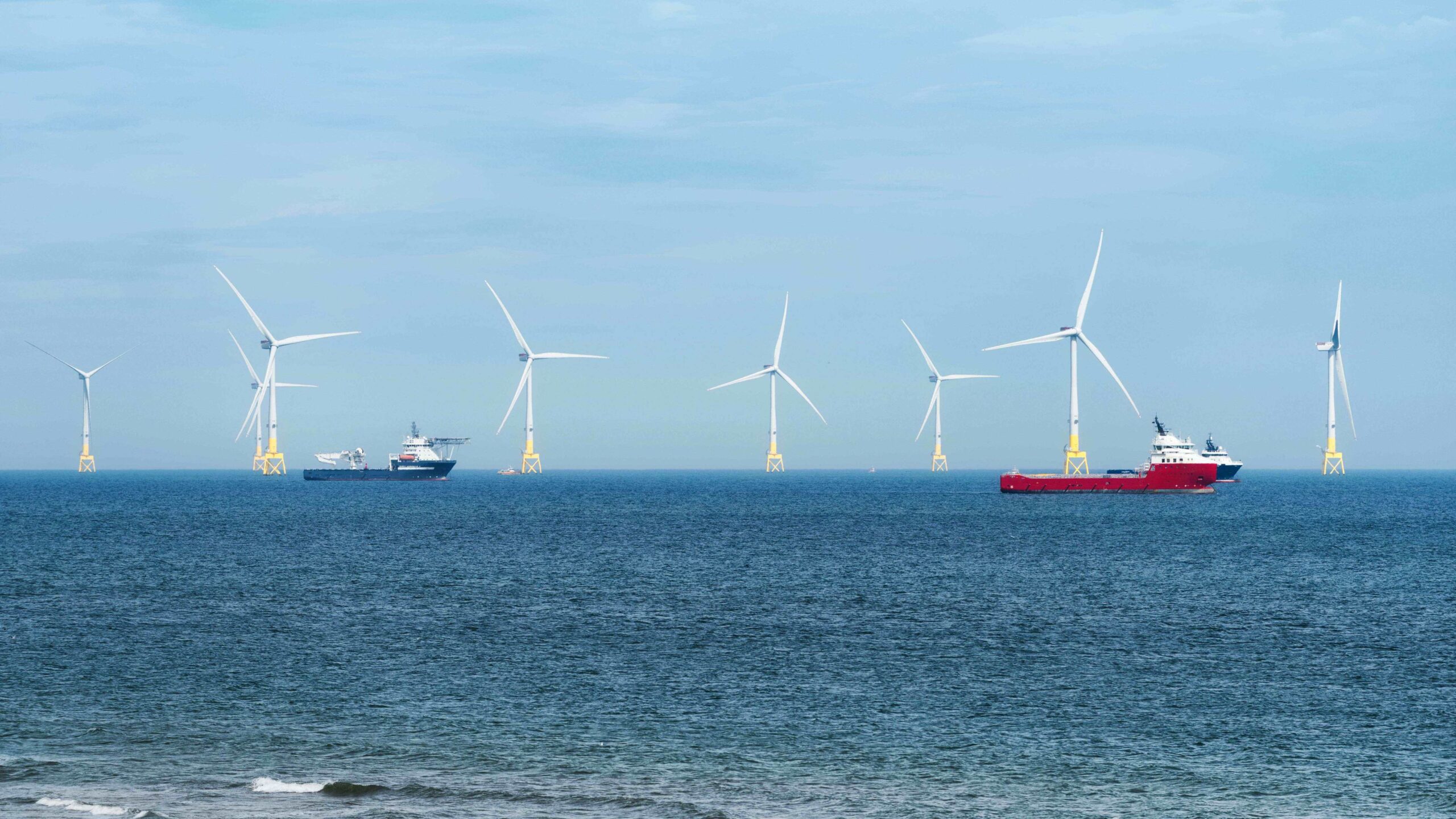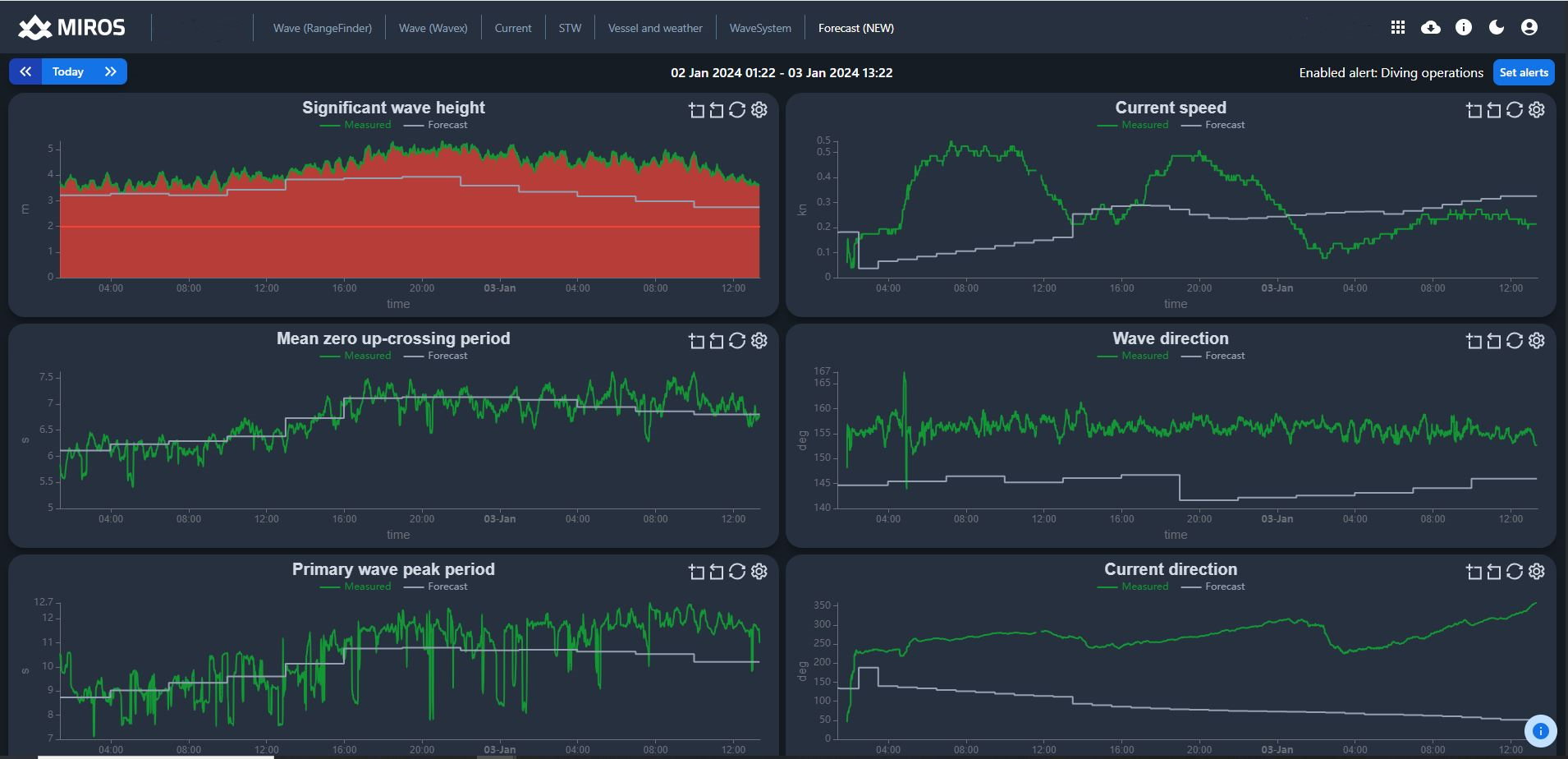Case Study: Navigating Offshore Wind Challenges to Enhance Operational Efficiency
The inability to accurately assess offshore conditions in real-time raised safety concerns for personnel, highlighting the need for a more robust solution.
- Product: Forecast, Miros Cloud
- Market: Offshore Wind



To download this case study, click here.
Background
Our client Vattenfall, a leading offshore wind farm developer and operator, faced operational disruptions due to challenges in accurately identifying offshore conditions at the Aberdeen Bay wind farm. Despite relying on weather forecasts there were instances where Crew Transfer Vessels (CTVs) were unable to safely transfer personnel to the wind turbines.
With support from The Offshore Renewable Energy (ORE) Catapult and Vattenfall, Miros installed wave measurement sensors over the course of a year to support the wind operator to better understand the wave conditions. One of the devices installed was Miros’ newest wave radar WaveFusion.
One day in March 2024, around noon, the crew were readying to board the turbine , based on the weather forecasts. When arriving at the site, the crew realized they could not board the turbine safely due to the vessel roll and high waves, and the CTV captain had to make the judgment call that the conditions were not suitable to operate, therefore cancelling the transfer and return to port.
The Challenge
While it is important to plan offshore operations according to weather forecasts, those forecasts cannot provide the same spatial and time resolution as metocean sensors measuring local conditions on-site in real-time. Therefore, offshore operations
relying solely on weather forecasts frequently face challenges when local metocean conditions deviate from weather forecasts.
Unforeseen weather conditions impact project timelines.
When weather forecasts overestimate the weather conditions, operations may get postponed when actual conditions are operatable. On the other hand, when forecasts underestimate the weather conditions, the offshore crew faces higher safety risks, more sea sickness, and more wasted vessel trips.
The inability to accurately assess offshore conditions in real-time raises safety concerns for personnel, highlighting the need for a more robust solution. Also, if the crew is deployed based solely on a weather forecast unable to provide finer resolution of local weather conditions and then turns around due to bad weather, it raises operational costs and expenditure for unnecessary vessel fuel consumption.
The scenario at the Aberdeen Bay wind farm was a clear-cut example of operations had to be replanned when relying solely on a weather forecast. Looking at Miros’ measurements during the specific time window after the fact, we can confirm that around
these hours there was a sudden increase in the wave height (green line) which is not captured by the forecast (white line) – Image 1.
By using real-time measurements in combination with forecasted data, the captain, together with other project stakeholders, can make accurate decisions effortlessly based on quantified accurate measurements as they could have seen the wave height picking up before they had even approached the turbine. The trip to this turbine location could have been assessed around 1 to 2 hours earlier and the crew transfer redirected for work at another turbine or returned to port.

Image 1: Dynamic dashboard displaying real-time and forecasted wave data providing an accurate and up-to-the-minute view of environmental conditions facilitating precise decision-making. The relevant time window for this case is highlighted by the square.
The Solution
Having access to real-time sea state measurements gives the flexibility and agility needed to conduct weather-dependent perations safely and efficiently. An advanced cloud-enabled monitoring solution, like Miros Forecast, is an indispensable tool that visualizes the ocean condition forecast and real-time conditions together in an easy and intuitive dashboard. Additionally, the application offers personalized alerts for each chart, enabling a proactive response when specific wave conditions surpass predefined limits to ensure the safety of offshore assets and personnel. See image 2.
Furthermore, Miros’ wave sensors can continuously feed real-time data to weather forecast providers, to fine-tune their forecast according to higher-resolution measurements from the site. Vattenfall teams have found enhanced forecast accuracy to bring additional value to their offshore operations.
The combination of real-time and forecasted wave data helps vessel captains to stay vigilant and ahead of environmental conditions, which is paramount for ensuring safety, efficiency, and cost-effectiveness. Instant access to the relevant, local data, provided via a secure cloud application, enhances better planning and communication between the offshore crew and onshore teams in the control room, as they can all access the same data at the same time. That’s why ensuring the ocean condition measurements are accessible remotely, anytime, anywhere and on any device, no matter if day or night, is a must for efficient operations.
See live offshore wind data on miros.app.
The Value
Offshore wind operators and their typical project stakeholders, like marine operations teams, site managers, control room operators, and diving and ROV technicians, benefit from enhanced crew safety, seamless operations, risk mitigation, cost efficiency and sustainability.
With precise real-time sea condition measurements, combined with forecasts of local offshore conditions, operators like Vattenfall can make critical operational decisions round-the-clock. They can prioritize crew safety and reduce risks during transfers.
Furthermore, they can minimize disruptions by accurately monitoring and identifying weather patterns, ensuring smooth transfers, and maintaining project timelines. It also addresses safety concerns by providing reliable assessments of offshore conditions, reduces potential hazards, and ensuring personnel wellbeing.
Reliable real-time measurements support cost efficiency and sustainability. Operators that utilize real-time sea state measurements can optimize their resources by avoiding unnecessary crew deployments and needless vessel fuel consumption, reducing the operational costs and environmental impacts of maintaining offshore wind farms.

Image 2: Example of the intuitive Miros Forecast dashboard, combining real-time sea state measurements with forecast data. The application offers user-customizable visual alerts for each chart, enabling a proactive response when specific wave conditions surpass predefined limits to ensure the safety of offshore assets and personnel.


